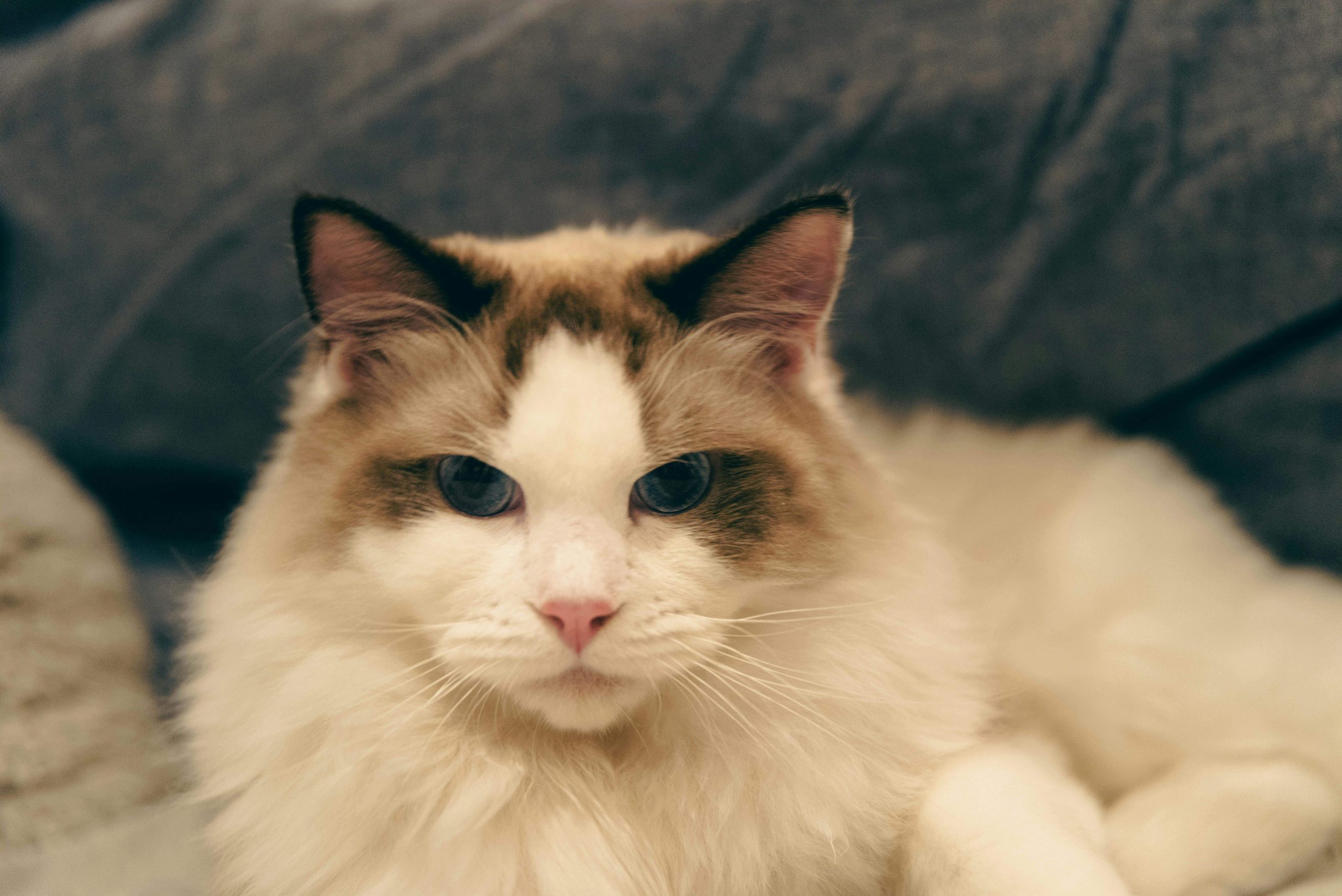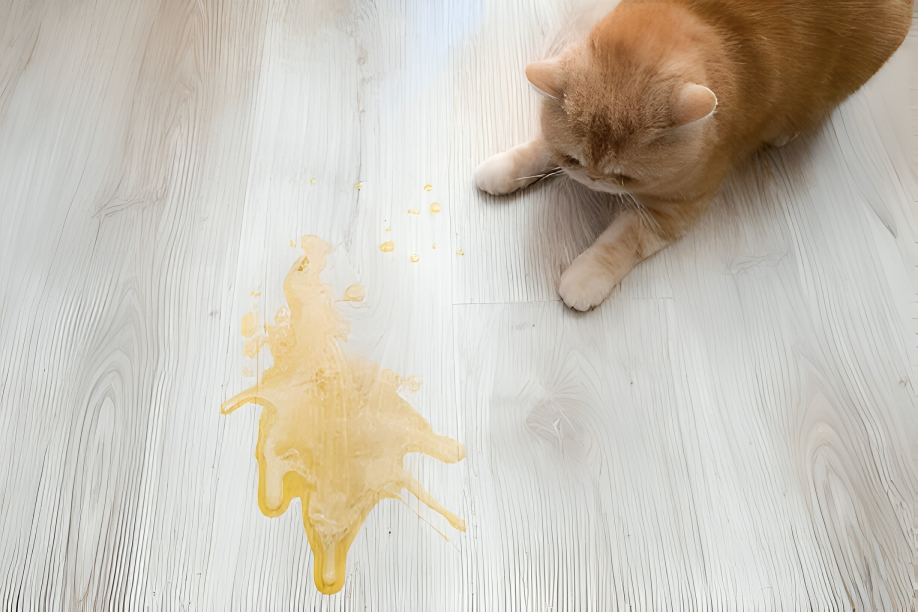Do Ragdoll cats need baths, or is brushing enough?
It’s a question that sparks endless debate. With their silky, semi-long fur, low-shedding nature, and famously clean habits, many owners believe bathing is unnecessary. Others swear by regular baths to keep the coat glossy and healthy.
Scroll long enough and you’ll see everything from “baths are torture” to “monthly spa days” recommended.
The truth? There’s no one-size-fits-all answer. Your Ragdoll’s coat condition, lifestyle, and health all play a role. I used to dread bath day—until I learned when to skip it altogether. This guide blends veterinary insight, grooming expertise, and real owner experiences—so you can decide with confidence, skip the guesswork, and avoid stress for both you and your cat.
Do Ragdoll Cats Need Baths?
Most healthy, indoor Ragdolls don’t need routine baths—their silky, semi-long coat and meticulous self-grooming (their tongue works like a built-in comb) naturally repel dirt. However, baths become essential when:
- Messes happen—oil spills, paint, or mud.
- Hygiene issues—poop/urine accidents, senior cat mishaps.
- Medical needs—vet-prescribed flea or medicated washes.
- Show prep—to boost coat shine.
Golden rule: Brush your cat often, bathe only when truly necessary, and always use cat-safe products for a healthy, stress-free coat.
You Might Also Like
Do Ragdoll Cats Like Water?
Most don’t love it, but some tolerate it just fine, especially when it helps them feel clean. While Ragdolls are famously gentle and social, their semi-long, silky coat naturally resists heavy matting, meaning they rarely need or enjoy full baths. Many indoor pets are content with brushing alone, but a bath may be welcomed (or at least tolerated) when:
- They’ve had a messy accident (oil, mud, litter mishap)
- Vet care calls for medicated treatment
- Show prep is needed for a glossy coat
Unnecessary baths can cause stress and strip skin of oils. The key is to assess need first, try gentler cleaning methods, and reserve a full soak for when it truly benefits your Ragdoll.
Bathing Alternatives Every Ragdoll Owner Should Know
Yes, you can usually skip baths and still keep your Ragdoll clean. Their silky, semi-long coat resists matting, so strategic brushing and spot-cleaning do most of the work without stripping natural oils.
For daily upkeep, try unscented, hypoallergenic cat wipes for paws, light dirt, or dander; waterless shampoos (foam, spray, or wipes) for mild odor control; and sanitary trims to prevent mess from clinging.
Wipes and dry shampoos are great for surface messes—but they won’t cut through grease or deep grime. Save full baths for oily buildup, accidents, medicated washes, or show days. Think of your Ragdoll’s coat like a wool sweater—treat it gently, and wash only when needed.
How to bathe a Ragdoll — step by step
When an urgent mess, vet-prescribed treatment, flea issue, or show prep calls for it, a gentle, stress-free bath can be the safest choice. Prepare carefully, stay patient, and use a gentle technique. That protects natural oils and keeps your cat calm.
You Might Also Like
Preparation – Set the Stage for Success
Bathing a Ragdoll is much easier when you’re fully prepared. Start by trimming their nails and gently cleaning their eyes and ears. Give their coat a thorough brush to remove loose hair and stop any mats from tightening once wet.
Have all your supplies within reach—a small sink or tub with a non-slip mat, lukewarm water, 2–3 microfiber towels, cat-safe shampoo (or a medicated option recommended by your vet), a gentle cup or sprayer, and plenty of treats. Finally, keep the room warm to ensure your cat stays comfortable and avoids chills.
Step-by-Step Bathing Routine
- Fill the sink/tub with 2–4 inches of lukewarm water before bringing your cat in.
- Gently wet from the shoulders down using a cup—keep the head dry.
- Use a damp cloth for the face.
- Apply a small amount of cat shampoo, massaging lightly.
- Rinse thoroughly—no residue should remain.
- Wrap in a microfiber towel, blot (don’t rub), and repeat with a fresh towel if needed.
- Optional: Blow-dry on low/warm if tolerated, keeping a distance and moving constantly.
- Reward with treats and let your cat relax in a warm, quiet space.
Drying & Aftercare
A Ragdoll’s thick coat holds moisture, so complete drying is essential. Blot gently, keep them warm until fully dry, and avoid drafts. If your cat shivers, seems stressed, or refuses handling afterward, monitor closely and contact your vet if needed.
Bathing Ragdoll kittens (safety first)
Ragdoll kittens may be famously gentle, but their small bodies lose heat quickly, making bath time easy to get wrong if you’re not careful. Skip routine “just because” washes—most hygiene needs are covered with brushing or spot-cleaning.
Only bathe for sticky messes, fecal accidents, or vet-advised treatments like fleas or medicated shampoos. I still remember my kitten’s wide-eyed stare at her first bath—so prep matters. Warm the room, fill a shallow sink with lukewarm water, and keep towels ready.
Limit sessions to 3–7 minutes and dry completely in a draft-free space. With calm hands and a warm setup, your kitten will stay clean without stress. Rule of thumb: keep baths short, warm, and calm.
Common Mistakes to Avoid When Bathing Ragdolls
Baths done well are harmless; done badly, they can lead to dry skin, matting, stress, and even vet visits.
Here’s how to avoid the mistakes that matter. Never use human or scented shampoos—Sara from Ohio did, and her kitten’s skin turned dry and flaky. A switch to pH-balanced cat shampoo and a moisturizing rinse fixed it.
Don’t bathe on a schedule “just because”—Lena tried weekly baths, but it dulled the coat until she swapped to weekly brushing and waterless shampoo.
Always dry completely—after skipping this step, Josh’s cat ended up shivering and needed a vet visit. Now, warm-room recovery is part of his routine. Prep, rinse thoroughly, and keep it calm—your Ragdoll’s coat and trust will thank you.
You Might Also Like
Final Thoughts
Keep baths rare, gentle, and purposeful — your comb, not the tub, will do most of the heavy lifting. Use this decision flow:
- Inspect for odor, grease, feces, fleas, or skin issues.
- Try alternatives — brushing, wipes, waterless shampoo, or sanitary trim.
- Bathe only if still necessary, following the low-stress, vet-safe checklist: brush first, lukewarm water, feline shampoo, thorough rinse, full dry.
That’s how I keep my own Ragdoll fluffy and stress-free — and it works. One indoor cat stayed spotless for two years with just brushing and wipes; another handled a grease spill with one shallow bath; show cats thrive on professional grooming every few weeks. Brush first, bathe last — your Ragdoll’s coat, skin, and trust will thank you.
Was this helpful? Feel free to save the checklist, share the post, or drop your bath hacks below — I reply to every comment.

Hi, I’m Abir Ahamed—a writer, editor, and proud cat lover with a passion for feline welfare. I use my words to educate, inspire, and advocate for responsible pet care. Based in Bangladesh, I bring a unique perspective to Cats Question, hoping to help cat lovers make informed, compassionate choices.






